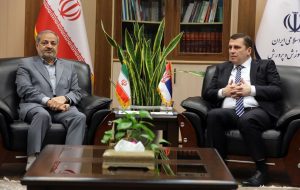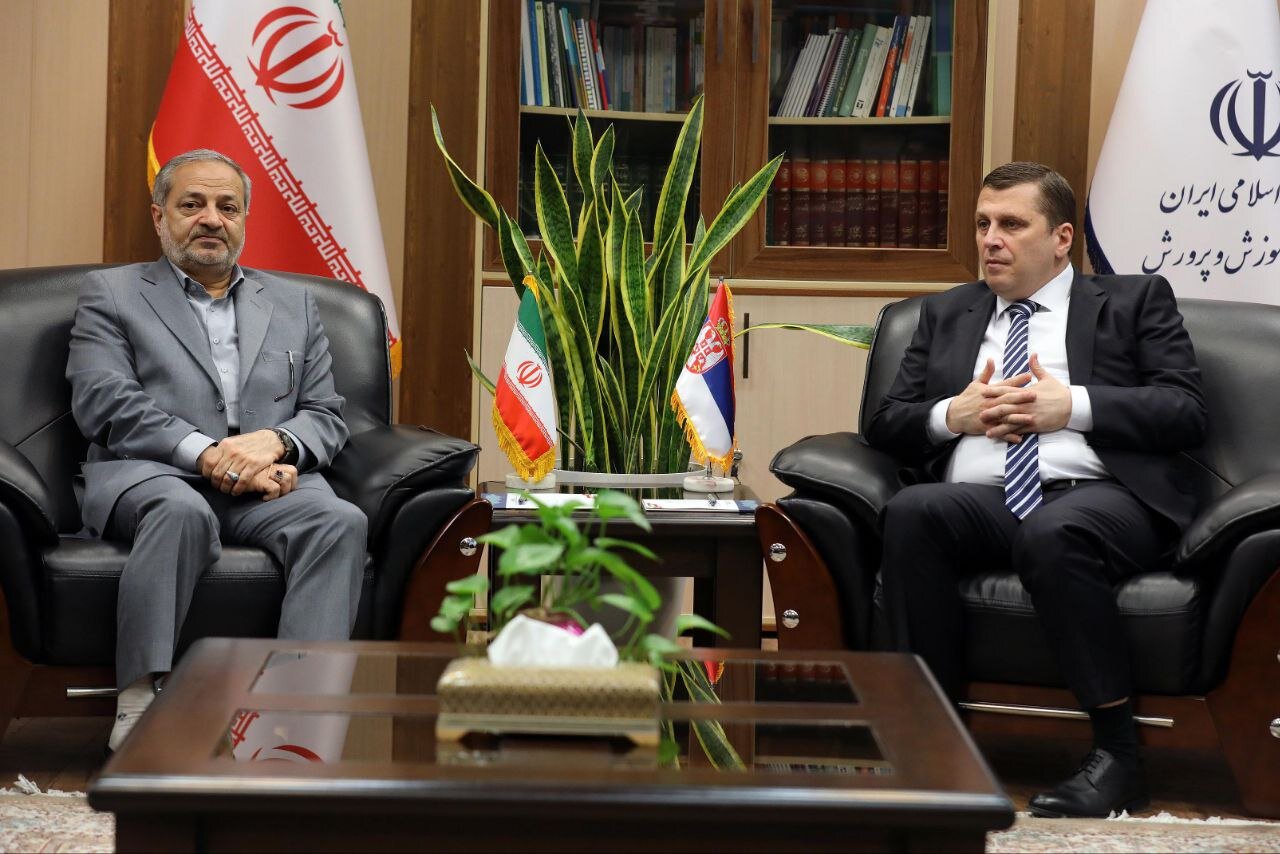Belgrade interested in enhancing educational ties with Tehran
TEHRAN – Serbian Ambassador to Tehran, Damir Kovacevic, has announced his country’s willingness to foster scientific, research, and educational collaborations with Iran. “Serbia is ready to deepen bilateral relations with Iran. The country grants scholarships to a large number of Iranian students, and offers sabbatical leaves to them,” the ambassador added. He made the remarks


TEHRAN – Serbian Ambassador to Tehran, Damir Kovacevic, has announced his country’s willingness to foster scientific, research, and educational collaborations with Iran.
“Serbia is ready to deepen bilateral relations with Iran. The country grants scholarships to a large number of Iranian students, and offers sabbatical leaves to them,” the ambassador added.
He made the remarks in a meeting with Education Minister Alireza Kazemi in Tehran on Sunday, IRNA reported.
On the other hand, “Iran’s ministry of education manages two teacher training universities. I think there are opportunities for cooperation and we welcome any new and innovative ideas in this field,” Kovacevic further noted.
The official went on to say that presently educational textbooks in the country feature European luminaries. However, enhancing collaborations can help include Iranian luminaries in textbooks, as well.
Kazemi, for his part, said Iran and Serbia already have bilateral relations in political, cultural, educational, and economic fields.
Highlighting the significance of exchanging knowledge and experiences, Kazemi proposed the expansion of the ties in vocational education, special education, and teaching literacy. The official asked for developing educational infrastructure and making use of Iranians teachers’ skills in Serbia.
He also invited the Serbian minister of education to pay a visit to Iran to share expertise in the education sector and become familiar with the research and scientific achievements of the country.
Iran, Serbia vow closer cooperation
Iranian Ambassador to Serbia, Rashid Hassanpour, recently engaged in discussions with the Serbian President regarding a range of bilateral, regional, and international matters.
As reported by IRNA, this meeting followed a phone call in which President Aleksandar Vucic congratulated Iran’s newly elected president, Masoud Pezeshkian, on his electoral success.
During that conversation, Vucic noted the significant growth in relations between Iran and Serbia under the late President Ebrahim Raisi and expressed optimism that this positive trajectory would persist with Pezeshkian’s presidency.
The Serbian President underscored the necessity of strengthening collaboration across various sectors. In turn, Hassanpour, who previously served as the head of the Iran-Serbia Parliamentary Friendship Group, conveyed his deep understanding of Serbia and expressed his aspirations for enhanced mutual cooperation to realize the full potential of the partnership between the two countries.
Iran and Serbia have had diplomatic relations for many years, and have enjoyed relatively friendly relations despite their different political systems. The two countries have cooperated in various fields, including trade, energy, education, and culture.
In recent years, there has been a push from both sides to strengthen ties, with Iranian and Serbian officials meeting regularly to discuss cooperation in various areas.
Key educational achievements
According to the latest statistics, education space per student in Iran has increased from 5.17 square meters in the calendar year 1396 (2017-2018) to 5.28 square meters in the year 1402 (2023 – 2024).
The literacy rate, as well, has increased from 87.9 percent in 1396 to 90.7 percent in 1402, IRNA reported.
In the mentioned six-year period, the ratio of resilient classrooms improved from 0.64 to 0.82, sport space per student grew from 0.17 to 0.20, and the ratio of classrooms equipped with cooling and heating systems rose from 0.48 to 0.68.
The literacy rate has improved in urban areas as well as rural areas. From 1396 to 1402, the literacy rate among men and women amounted to 93.9 percent and 87.4 percent, respectively.
The literacy rate in urban areas was announced to be 92.8 percent, males had a literacy of 95.4 percent and females had a literacy rate of 90.2 percent.
In rural areas, the literacy rate reached 83.5 percent. Men accounted for 88.8 percent and women for 78.3 percent of the figure.
Moreover, the number of out-of-school students in primary, secondary, and high school lowered from 2.17, 6.71, and 18.19 percent in 1396 to 2.10, 5.23, and 16.12 percent in 1402, respectively.
Literacy growth rate in Iran 2.5 times the world average
In the past four decades, the growth of literacy in the world has been about 18 percent, while in the same period, this figure in Iran has been 50 percent, IRNA reported.
Nearly one year after the 1979 Islamic Revolution, the Literacy Movement Organization was established by the order of Imam Khomeini with the aim of eradicating illiteracy.
At that time more than half of Iran’s population, over the age of six, was illiterate. Now, Iran is on the verge of removing illiteracy.
MT/MG
